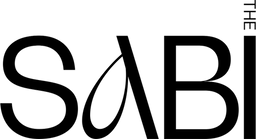When we became mothers, breastfeeding was never just a clinical decision. It was raw and human: long nights, cracked nipples, a sense of deep love mixed with exhaustion and self-doubt. Between us, as co-founders, we’ve breastfed for over four years combined. And one question we heard again and again, from friends, family, even from ourselves was: How long should I keep going? When is it enough?
It’s a personal question, but it’s also a scientific one. Because beyond nourishing babies, breastfeeding also carries measurable health benefits for mothers. Large-scale analyses show that for every 12 months a woman breastfeeds across her lifetime, her risk of breast cancer drops by about 4.3%. That’s not trivial. Breast cancer affects 1 in 8 women in their lifetimes, so even small shifts can make a huge difference at a population level.
But here’s the real question mothers want to know: how long is long enough to get the benefit? So what does the science say? and what does it mean for women in the very real, very messy reality of modern motherhood?
The First 6 Months: A Critical Window
The World Health Organization recommends exclusive breastfeeding for the first six months, meaning no formula, no solid foods. Part of this is for the baby’s immune and nutritional development. But it also matters for mothers: exclusive breastfeeding during this period keeps oestrogen levels suppressed by prolonging lactational amenorrhoea (no ovulation).
Studies show that women who breastfeed exclusively for at least six months reduce their risk of oestrogen receptor–positive breast cancers, the most common subtype (WCRF).
This is also the point at which many mothers struggle most. Fatigue, return to work, pressure from society, they all collide around this time. And yet, if support is there, the first six months offer a measurable protective effect.
12 Months: A Clear Risk Reduction
The clearest data we have shows that breastfeeding for at least 12 months in total — whether across one child or several, provides a meaningful reduction in breast cancer risk.
A pooled analysis covering 30 countries and nearly 50,000 women with breast cancer found that risk fell by about 4.3% for each 12 months of breastfeeding, cumulative across all children (Lancet). That means if you breastfed three children for a year each, your lifetime risk could be more than 12% lower compared with someone who didn’t breastfeed at all.
For women with BRCA1 mutations, the evidence is especially striking: those who breastfed for at least 12 months had a 32% lower risk compared with those who didn’t (PubMed). For women already living with high inherited risk, this duration matters.
24 Months and Beyond: The Population Impact
The World Health Organization and UNICEF both recommend continued breastfeeding up to 2 years and beyond, alongside complementary foods. From a population health perspective, this recommendation has weight: modelling shows that if more women breastfed for 24 months or more, global breast cancer incidence could be significantly reduced (Lancet Public Health).
What’s fascinating is that risk reduction doesn’t plateau at 12 months. It continues: each additional year brings more benefit, especially for hormone-driven cancers. But at the same time, sustaining breastfeeding into toddlerhood is not easy in today’s world. Cultural stigma, work constraints, and personal fatigue often make it feel impossible, even if the biology says otherwise.
Exclusive vs. Partial Breastfeeding
It’s not just duration that matters. Exclusive breastfeeding (no supplementation) has been linked to stronger reductions in breast cancer risk than partial breastfeeding (NIH PubMed). The reason? Oestrogen suppression is stronger when breastfeeding is frequent and exclusive, keeping hormone exposure lower.
This means that even shorter exclusive breastfeeding may carry more benefit than longer, interrupted or supplemented feeding.
Subtypes: Why Duration Matters Even More for Triple-Negative Breast Cancer
Duration appears particularly important for triple-negative breast cancer (TNBC), one of the most aggressive subtypes. Several studies show that women who have children but do not breastfeed face a higher risk of TNBC, whereas those who breastfeed, especially for longer, see that excess risk reduced (Breast Cancer Research).
This is critical because TNBC disproportionately affects younger women and Black women. Supporting longer breastfeeding durations could be a public health strategy to reduce disparities.
The Reality Check: Duration in Modern Life
All of this research makes one thing clear: longer is better. But the real-life question is: how long is realistic?
Globally, more than 60% of mothers stop breastfeeding earlier than they intend, often due to stress, exhaustion, milk supply worries, or the simple lack of structural support (WHO). Many women aim for six months but stop sooner; many aim for a year and make it half that far.
That doesn’t mean the benefits vanish. Any duration of breastfeeding counts. Each month contributes to reduced lifetime risk. The science is cumulative, and the message should be encouraging, not guilt-inducing.
Supporting Mothers to Go as Long as They Choose
If longer durations bring more protection, then the key question is: how do we support women to breastfeed as long as they want to? That’s where nourishment, rest, and small rituals come in.
The evidence is clear:
-
Every 12 months of breastfeeding lowers breast cancer risk by ~4.3%.
-
Exclusive breastfeeding confers stronger protection than partial.
-
BRCA1 carriers see a 32% reduction with ≥12 months (PubMed).
-
Longer durations, 24 months and beyond, bring even greater benefits, particularly for triple-negative breast cancer (Breast Cancer Research).
But duration is not only about biology; it’s about culture, work, family, and support. And that’s where we, as women, mothers, and communities, can change the story. By giving mothers the nourishment, time, and dignity they deserve, we can turn “how long is long enough” from a question into a choice.
Cheers
H
HORMONAL & PROUD
Created as a brand to help women navigate the toughest moments in pregnancy, childbirth, postpartum — and practically every stage of life –– The SABI is changing the narrative around our hormones from one of taboo, embarrassment, and loneliness to awareness and even, pride. As more than a wellness brand, The SABI offers a carefully-crafted line of products to carry you through your hormonal journey, including rituals, supportive tools, and ancient herbal remedies that have been tested time and time again by women and now come backed by medicine. The SABI is a blend of science and nature conceived by women who have experienced the joys and deep struggles of bringing a child into the world, the pains of a heavy, difficult period, miscarriage, and difficulty conceiving.
We invite you to get to know your body and its cycles better –– to really understand what is going on inside. Learn to use your hormones to your advantage no matter your stage of life, and know that you can support and balance your hormone levels. We are here to help with the information, understanding and natural tools to support your body and the emotional process along with it.
DISCLAIMER
The SABI blog and articles are not meant to instruct or advise on medical or health conditions, but to inform. The information and opinions presented here do not substitute professional medical advice or consultations with healthcare professionals for your unique situation.
References
-
Collaborative Group on Hormonal Factors in Breast Cancer. Breast cancer and breastfeeding: collaborative reanalysis. Lancet. 2002.
-
American Cancer Society: Breast cancer statistics.
-
World Cancer Research Fund: Breastfeeding and cancer risk.
-
Kotsopoulos J, et al. Breastfeeding and breast cancer risk in BRCA1/2 carriers. J Natl Cancer Inst. 2002.
-
Warner ET, et al. Parity, breastfeeding, and risk of triple-negative breast cancer. Breast Cancer Res. 2016.
















